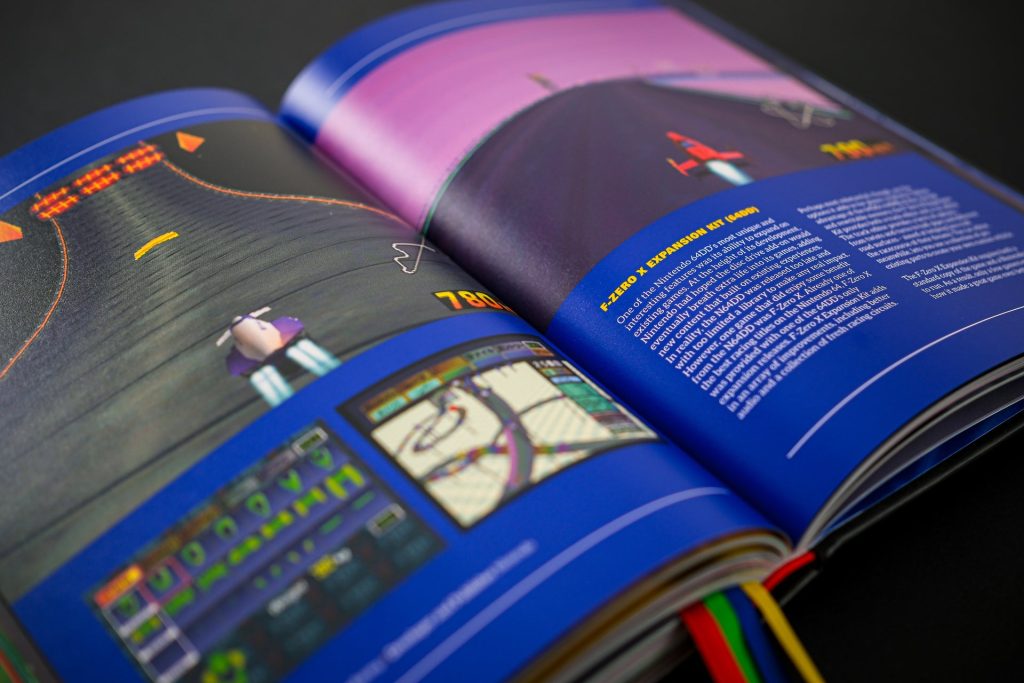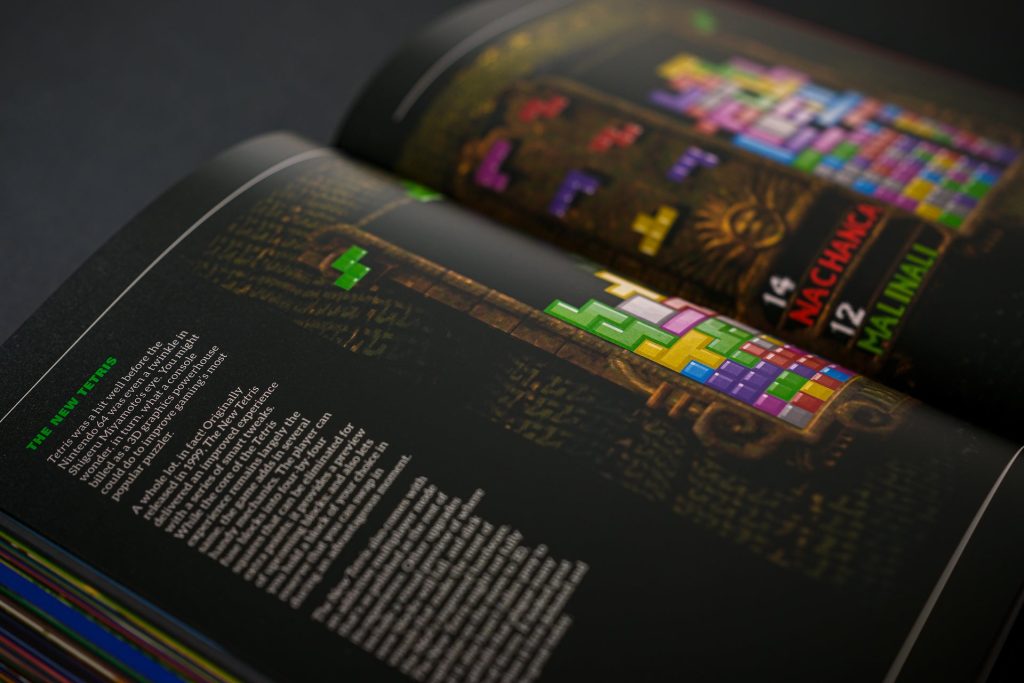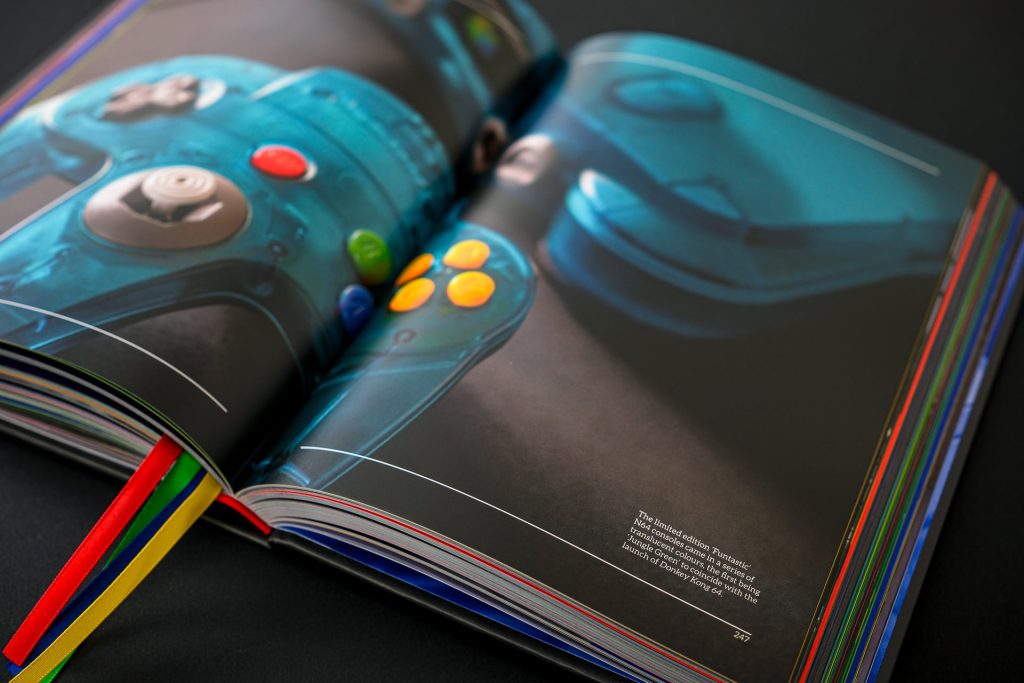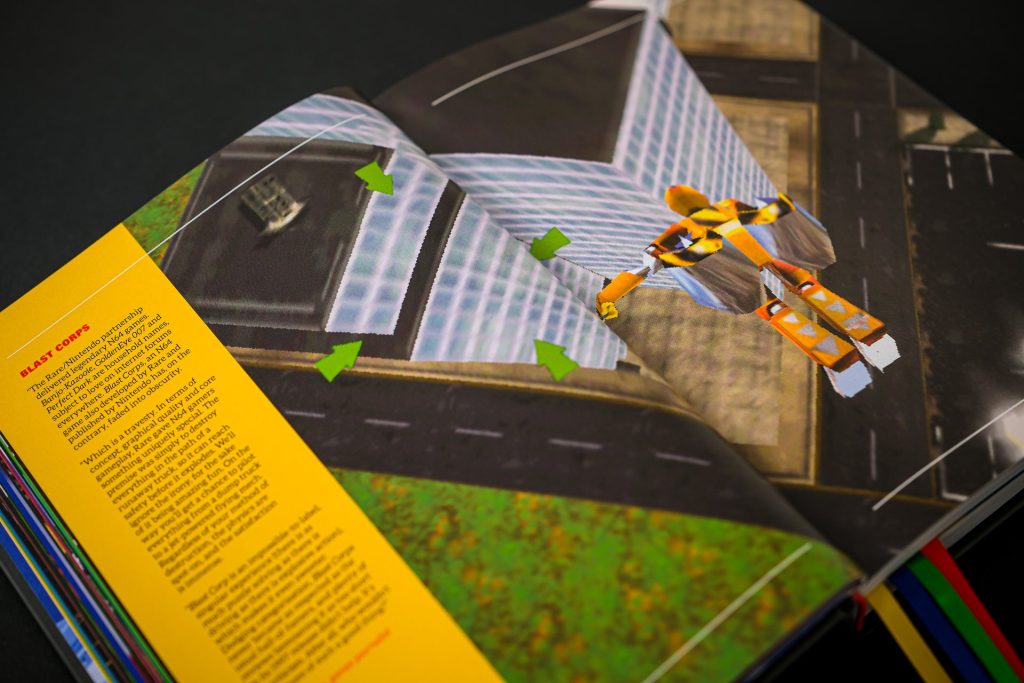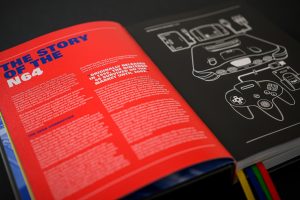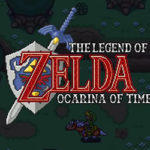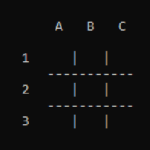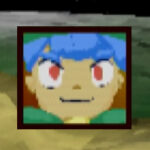N64: A Visual Compendium by Bitmap Books

N64: A Visual Compendium is a book in a series of by Bitmap Books that is one in the series of video game compendia where they cover a variety of games on a console, in this case the Nintendo 64.
It has hundreds of authors as each entry is covered by a different person but it is all collated together by Bitmap Books, likely by Sam Dyer, the owner.
Scope and Purpose
Let’s get this out of the way first. This isn’t a complete collection of all games so there are might be a game or two that you are interested in that will be missing from this book.
I’d say that this book is ideally for someone who wants to traverse the history of the Nintendo 64 as it is happening since the games are laid out in chronological order. It also works well for a casual reader that just wants to read a random page at a time.
Organisation & Editorial Approach
Most of the book is focused on covering all the different games for the Nintendo 64, but there a few points where it diverges into different formats and topics like interviews and hardware.
Intro

The intro includes two sections – a forward by David Doak (known for 007 Goldeneye & Perfect Dark) and The Story of the N64.
The foreword is just a page long, and it goes though Doak’s time at Rare and how new the Nintendo 64 felt.
The The Story of the N64 section is about 6 pages and covers the overarching history of the Nintendo 64, from the hardware’s inception to it business deals. From its delays to its launch, and its repertoire to its legacy. There’s a little bit of everything for everyone.
Game reviews
These form the bulk of the content of N64: A Visual Compendium. Each game entry has its own page, but there are a few like Super Mario 64, 007 Goldeneye or Ocarina of Time that have multiple pages dedicated to it.
The games are presented in chronological order starting off with Super Mario 64 and ending with Dr. Mario 64. Not all games are included, mind you, but pretty much every series is represented.
Each entry has its own 2-page spread which includes the game’s details (title, year released, genre, developer and publisher), a blurb from either a journalist of one of the staff, and a massive spread screenshot of the game. Sometimes shorter blurbs give enough space for a smaller screenshot like in the entry for Shadowman, but that’s more of an exception than the rule.
There are some entries that don’t have an author attributed to them like Maddedn NFL 99 or Nushi Tsuri 64. I guess that these were written by the editor, Sam Dyer.
What games are included
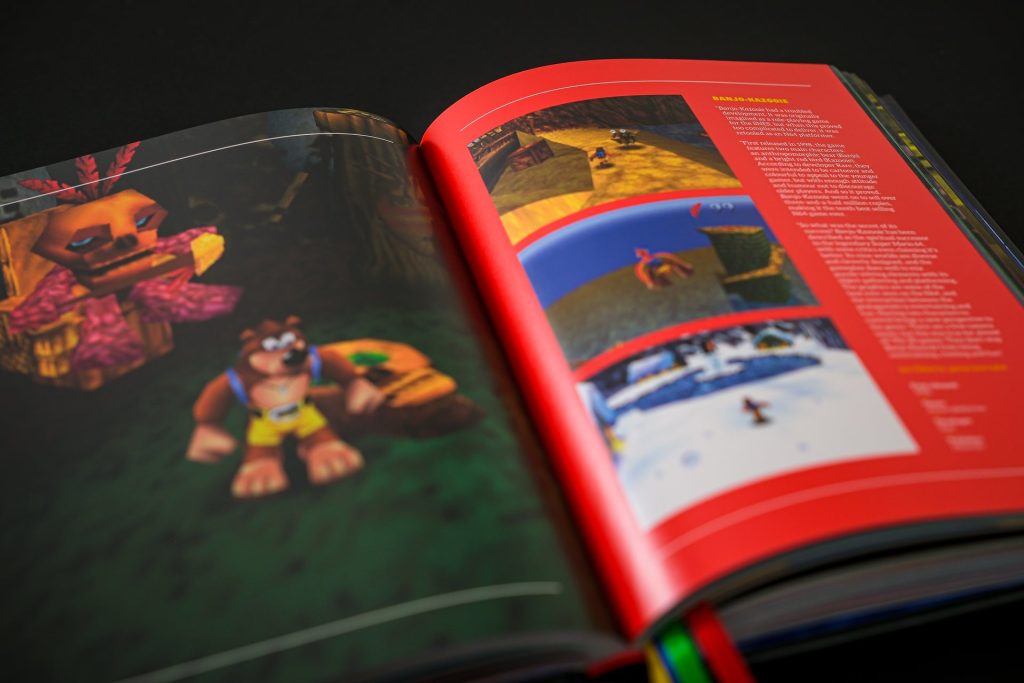
Not all N64 retail games are included in this book. All the big ones are accounted for – Mario, Zelda, Goldeneye, Banjo and more. The ones that are missing are most of the identical sports titles (there’s usually one from each series) and the niche games that are aimed at kids (Rugrats, Duck dodgers, Elmo etc).
Though sparse, there are also a few Japanese games sprinkled throughout the book. This includes those that were particularly impactful like Sin & Punishment, Doubutsu no Mori or Custom Robo; or some niche games like Dezaemon 3D or Densha De Go. There’s even a few 64DD games included.
Something I found interesting is that they even had a section at the end of the book dedicated to unreleased games as one of the features (more below).
There’s a total of 152 Nintendo 64 games covered in this book; about 40% of the console’s international library.
Interviews
There are a few interviews with the staff strewn throughout the book. These are multi-page discussions with one of the people behind some of the great titles on the N64:
- Kevin Bayliss – Rare
- Julian Eggebrecht – Factor 5
- Michael Mendheim – 3DO
- Remington Scott – Iguana Entertainment
- Jim Wornell – Nintendo of America
Each interview typically covers several of the games that each person worked on, even some of the games they made for different consoles. They also talk about their experience of playing with the N64 and how it impacted their view on game design.
Hardware / Features
The book dives into some of the hardware for the N64 as well. Like the interviews, these are multi-page articles about specific hardware accessories for the Nintendo 64:
- The development and legacy of the N64’s controller
- The story of the N64 Expansion Pak
- Too little, too late: the story of the 64DD
The hardware features go into detail regarding their history, their features and they games that they affected. These features don’t have any credits, so I guess that they’re attributed to Sam Dyer.
And then there’s another one at the very end: The N64’s cancelled cartridges
This one instead focuses on cancelled games that never got to see the light of day. Some of them eventually were cancelled and moved to the GameCube, while others were scrapped completely. Here are the ones covered:
- Robotech: Crystal Dreams
- Dinosaur Planet
- Earthbound 64
- Die Hard 64
- Glover 2
- Thornado
- Eternal Darkness
- Resident evil Zero
Content Analysis
Pacing and chronological order
The games are presented in chronological order. This means that if you’re reading the book from front to back, they’re going to be presented in what appears mostly randomly. You’re not going to see for example Ocarina of Time and Majora’s Mask back-to-back so it doesn’t get too repetitive.
This also means that reading the book in order feels like you’re reliving the 90’s. You get exposed to more and more games as they are released, so it gives you a good feel for what was available at any point in time. Unfortunately, each entry only includes the year of release so you have to guesstimate the precise month and day as you’re reading along.
Value of content
Each of the entries are written by a different person. Most of them are games journalists, but some of them are people who worked on the games in question who provided their behind-the-scenes insight on how it was made.
Because of this, it’s hard to give any generalised comment to the value of the content in the book as a whole since some entries are more informative and others are more opinionated. Some prefer to explain what the game was about by going into detail about the gameplay and levels while others prefer to talk about how the game fits in to the general gaming zeitgeist of the time.
Some of the contributions are written exclusively for this book, but others have been scraped from ones that are available online. Props to the editor for keeping it transparent by providing references to the sources at the beginning of the book.
When it comes to being a complete record, this book is far from complete. Only about 40% of all N64 games are covered so if you’re passionate for an obscure title, it’s likely that you’ll miss out on it.
I suspect one of two things happened. Either the editor contacted a wide range of journalists and asked them to write about any game they liked, which naturally resulted in coverage of only the most popular titles. Or, he deliberately chose a limited set of games to maintain pacing, then sought out journalists and developers directly or through referrals to write snippets about those specific titles.
Review and Conclusion
Flipping through N64: A Visual Compendium from front to finish is a fascinating feat.
Physical appearance
I got the hardcover book, and it has a nice and sturdy build. It comes in its own hardcover sleeve which is nice but I think is a bit unnecessary.
The cover art is quite clever, it’s an A-to-Z of various assets from N64 games and art:
- A – Looks like a Mario font?
- B – Golden banana (DK64)
- C – Charizard (Smash Bros)
- D – Doom pistol
- E – Yoshi Egg
- F – Fuzzy
- G – Goemon
- H – Harvest Moon
- I – Earthworm J[i]m
- J – James bond
- K – Kirby
- L – Lakitu
- M – Mario
- N – Ness
- O – B-button / Joystick (?)
- P – Poké Ball
- Q – Quest 64
- R – Red Shell
- S – Power Star
- T – Turok
- U – Looks like DK64 font?
- V – Virus (Dr. Mario)
- W – Wario’s Kart
- X – F-Zero X
- Y – Yoshi
- Z – Zelda
The outer shell has a lenticular print glued on it that animates most of these icons if you tilt it vertically. Very 90’s indeed.
There are four ribbon markers included in the colours of the N64’s controller buttons. This is a nice little touch but the only thing that would have made it better is if the cover was “N64 controller gray”.
Editorial
The entries’ chronological order makes it so that franchises and genres are kept separate, which means that it is never tedious or redundant to read though. Having all these perspectives from different journalists also helps to keep things fresh and varied.
It does however make it feel as though everyone wants to make their mark in the book. Almost every entry by a journalist reads like the game they’re reviewing is revolutionary and left a deep impact on anyone who played it. For a lot of cases, it was the first in the genre to make the jump to 3D but it still feels embellished.
The developer blurbs are packed with insight, featuring original snippets from the game’s creators as well as quotes from public interviews. This does feel like there was a good amount of effort put into research rather than just having opinion pieces.
The only problem with this approach is the inconsistency. With some games, I craved a developer’s deep dive into how it was made, but with others (especially those I don’t know well), I would have preferred a journalist’s broader overview.
Given that only a small portion of games were written about (~40% of all N64 games), most of the selected games were the memorable ones. There were a few negative reviews like Superman 64 and (surprisingly to me) Pokémon Snap, but some notable duds like Daikatana or Carmaggedon are absent.
Features & interviews
The features and interviews are sprinkled throughout the book, breaking up what could be considered to be monotonous.
The features (presumably written by the editor) follow mostly the N64 hardware accessories and what they meant to the console. All the way from their concept and history to their adoption, execution and legacy. My favourite has to be the Expansion Pak one because of how the book explains the way it is used in different games, and the Unreleased Games one because of how little we hear of these games nowadays.
The interviews on the other hand are similar to the developer blurbs but much more in-depth. My favourite has to be the one with Remington Scott which goes into detail about the motion capture used in Turok: Dinosaur Hunter, so it feels more like a conversation with a developer wanting to showcase new techniques. The others read a bit more like a fan meeting their idol and gushing about every little thing they remember and what the game meant to the industry.
I suppose that neither style is better or worse, it’s just a matter of preference.
Images
Where N64: A Visual Compendium really shines is in its use of visuals. Each entry covers a 2-page fold, and about 70% of that is one giant, massive screenshot. While it doesn’t ooze practicality, it does make it feel like every page is an homage to the game it’s talking about.
Some of the pages have a secondary image below the text, but I think it’s just a bit of filler for when the blurb is too short.
The features and interview pages tend to be a bit more text-heavy, but that’s fine since the games they discuss usually have their own page dedicated to them.
Value
The book costs £30, but at the time of writing there is a discount to £27.59. It is also available for €32 or $50 internationally. I suppose that they need to be shipped overseas to the US which makes them more expensive.
There is no paperback version that I could find. There is a digital PDF, but I’ve only seen it sold alongside the hardback version.
Final thoughts
N64: A Visual Compendium is defined by two things: its structure and its contributors. Whether those are advantages or disadvantages really depends on how you choose to read the book.
The structure deliberately excludes around 60% of the Nintendo 64’s library. On one hand, that means you’re not getting a complete picture of what the console had to offer. On the other, it trims away a lot of the repetition and filler, creating a smoother, more engaging reading experience.
Organizing the entries in chronological order also has trade-offs. It prevents long stretches of similar games from the same series from piling up, making it easier to read cover to cover. But if you’re looking for a specific title, you’ll need to flip to the index instead of browsing by theme or genre.
Then there are the contributors. The book draws from a wide range of voices: bloggers, journalists, developers, even publishers. This variety keeps things fresh, offering everything from broad overviews to detailed behind-the-scenes stories. The downside is inconsistency: with so many different writing styles and perspectives, not every entry feels like it belongs to the same cohesive whole.
If there’s one thing the book nails every time, it’s the screenshots. They’re beautifully composed and printed large, perfectly distilling what made each game memorable.
For anyone who loves diving into Nintendo 64 history, N64: A Visual Compendium is a treat. It’s not always the most tightly focused read, but it’s never boring. Between the developer interviews, the hardware explorations, and the mix of voices from different writers, there’s always something fresh and interesting to discover.
